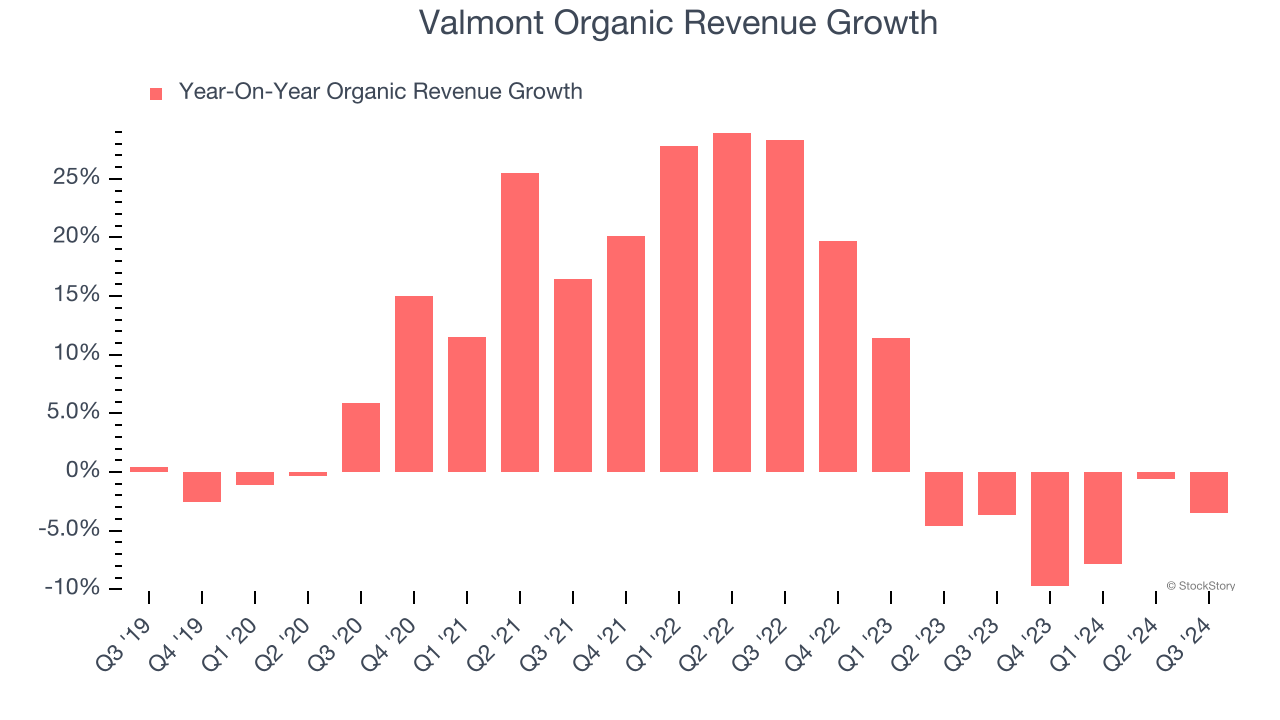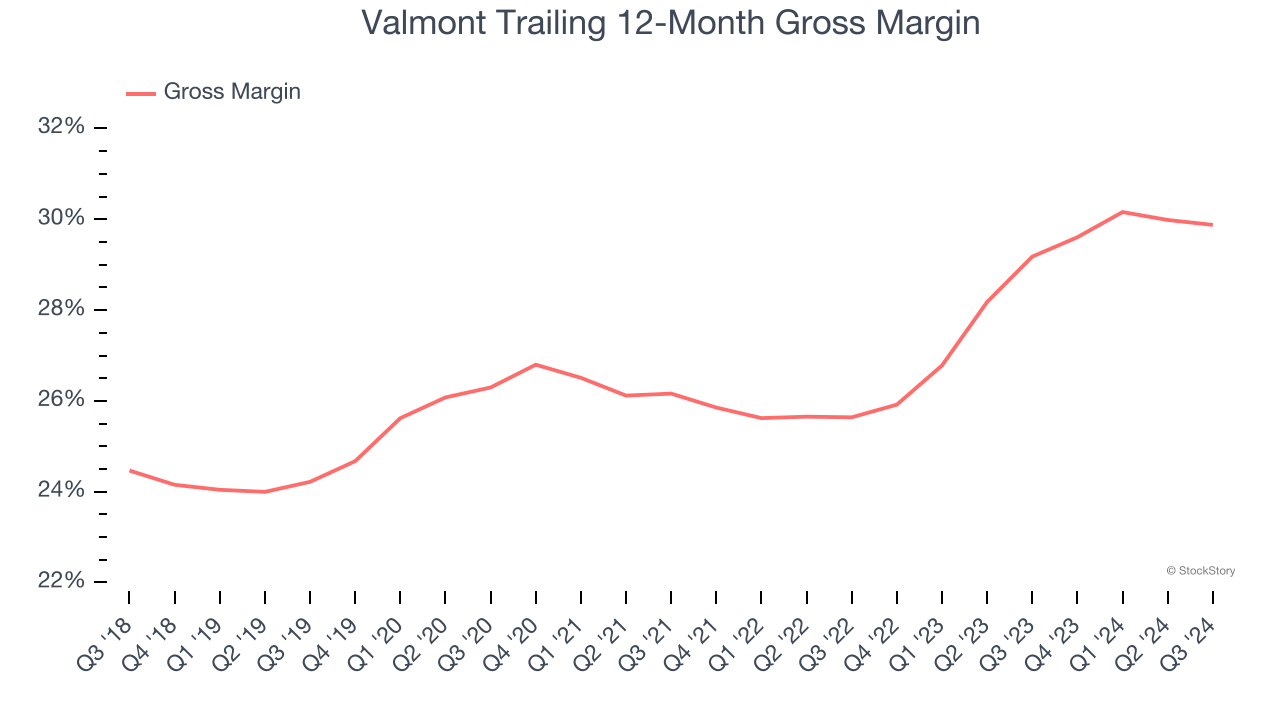Valmont’s 18.1% return over the past six months has outpaced the S&P 500 by 11.5%, and its stock price has climbed to $338.84 per share. This performance may have investors wondering how to approach the situation.
Is now the time to buy Valmont, or should you be careful about including it in your portfolio? Dive into our full research report to see our analyst team’s opinion, it’s free.
Despite the momentum, we're swiping left on Valmont for now. Here are three reasons why you should be careful with VMI and a stock we'd rather own.
Why Is Valmont Not Exciting?
Credited with an invention in the 1950s that improved crop yields, Valmont (NYSE:VMI) provides engineered products and infrastructure services for the agricultural industry.
1. Core Business Falling Behind as Demand Plateaus
Investors interested in Building Materials companies should track organic revenue in addition to reported revenue. This metric gives visibility into Valmont’s core business because it excludes one-time events such as mergers, acquisitions, and divestitures along with foreign currency fluctuations - non-fundamental factors that can manipulate the income statement.
Over the last two years, Valmont failed to grow its organic revenue. This performance was underwhelming and implies it may need to improve its products, pricing, or go-to-market strategy. It also suggests Valmont might have to lean into acquisitions to accelerate growth, which isn’t ideal because M&A can be expensive and risky (integrations often disrupt focus). 
2. Projected Revenue Growth Is Slim
Forecasted revenues by Wall Street analysts signal a company’s potential. Predictions may not always be accurate, but accelerating growth typically boosts valuation multiples and stock prices while slowing growth does the opposite.
Over the next 12 months, sell-side analysts expect Valmont’s revenue to rise by 3.2%. While this projection suggests its newer products and services will spur better top-line performance, it is still below average for the sector.
3. Low Gross Margin Hinders Flexibility
Gross profit margin is a critical metric to track because it sheds light on its pricing power, complexity of products, and ability to procure raw materials, equipment, and labor.
Valmont’s gross margin is slightly below the average industrials company, giving it less room to invest in areas such as research and development. As you can see below, it averaged a 27.6% gross margin over the last five years. That means Valmont paid its suppliers a lot of money ($72.43 for every $100 in revenue) to run its business. 
Final Judgment
Valmont isn’t a terrible business, but it doesn’t pass our bar. With its shares outperforming the market lately, the stock trades at 18.7× forward price-to-earnings (or $338.84 per share). While this valuation is fair, the upside isn’t great compared to the potential downside. We're fairly confident there are better stocks to buy right now. Let us point you toward CrowdStrike, the most entrenched endpoint security platform.
Stocks We Like More Than Valmont
With rates dropping, inflation stabilizing, and the elections in the rearview mirror, all signs point to the start of a new bull run - and we’re laser-focused on finding the best stocks for this upcoming cycle.
Put yourself in the driver’s seat by checking out our Top 6 Stocks for this week. This is a curated list of our High Quality stocks that have generated a market-beating return of 175% over the last five years.
Stocks that made our list in 2019 include now familiar names such as Nvidia (+2,183% between December 2019 and December 2024) as well as under-the-radar businesses like Sterling Infrastructure (+1,096% five-year return). Find your next big winner with StockStory today for free.
